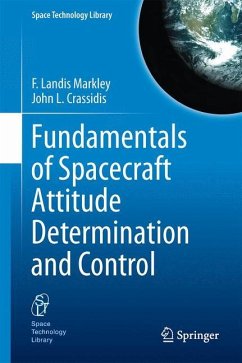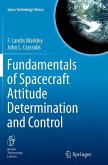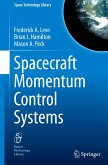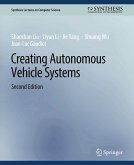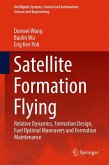This book explores topics that are central to the field of spacecraft attitude determination and control. The authors provide rigorous theoretical derivations of significant algorithms accompanied by a generous amount of qualitative discussions of the subject matter. The book documents the development of the important concepts and methods in a manner accessible to practicing engineers, graduate-level engineering students and applied mathematicians. It includes detailed examples from actual mission designs to help ease the transition from theory to practice and also provides prototype algorithms that are readily available on the author's website.
Subject matter includes both theoretical derivations and practical implementation of spacecraft attitude determination and control systems. It provides detailed derivations for attitude kinematics and dynamics and provides detailed description of the most widely used attitude parameterization, the quaternion. This title also provides a thorough treatise of attitude dynamics including Jacobian elliptical functions. It is the first known book to provide detailed derivations and explanations of state attitude determination and gives readers real-world examples from actual working spacecraft missions. The subject matter is chosen to fill the void of existing textbooks and treatises, especially in state and dynamics attitude determination. MATLAB code of all examples will be provided through an external website.
Subject matter includes both theoretical derivations and practical implementation of spacecraft attitude determination and control systems. It provides detailed derivations for attitude kinematics and dynamics and provides detailed description of the most widely used attitude parameterization, the quaternion. This title also provides a thorough treatise of attitude dynamics including Jacobian elliptical functions. It is the first known book to provide detailed derivations and explanations of state attitude determination and gives readers real-world examples from actual working spacecraft missions. The subject matter is chosen to fill the void of existing textbooks and treatises, especially in state and dynamics attitude determination. MATLAB code of all examples will be provided through an external website.
"The present book presents the fundamental concepts and mathematical basis for spacecraft attitude description and control. ... Every chapter and appendix contains a rich references. After reading this book, the reader will be convinced that the intended audience for it consists of graduate students, Ph.D. students and scientists with an interest in spacecraft attitude determination and control." (Clementina Mladenova, zbMATH 1381.70006, 2018)
"It is of exceptional quality in both the range of subjects covered and the detail of that coverage. ... this book has a lot to offer to those of us involved in the developments and data processing for such projects, describing in detail external forces as well as the effects of non-rigidity. ... this is a very worthwhile volume, highly recommended for anyone involved in astronomical or other satellite projects." (Floor van Leeuwen, The Observatory, Vol. 135 (1246), June, 2015)
"This is an excellent book. Markley ... and Crassidis (Univ. of Buffalo) have succeeded in creating a work that is a good textbook for both upper-level undergraduate and graduate students as well as practitioners. ... book ends with several appendixes that further support the rest of the book and also provide novice practitioners with a good resource to help them understand the more technical and complicated material. ... Summing Up: Highly recommended. Aerospace engineering collections serving upper-division undergraduates through professionals/practitioners." (D. B. Spencer, Choice, Vol. 52 (7), March, 2015)
"It is of exceptional quality in both the range of subjects covered and the detail of that coverage. ... this book has a lot to offer to those of us involved in the developments and data processing for such projects, describing in detail external forces as well as the effects of non-rigidity. ... this is a very worthwhile volume, highly recommended for anyone involved in astronomical or other satellite projects." (Floor van Leeuwen, The Observatory, Vol. 135 (1246), June, 2015)
"This is an excellent book. Markley ... and Crassidis (Univ. of Buffalo) have succeeded in creating a work that is a good textbook for both upper-level undergraduate and graduate students as well as practitioners. ... book ends with several appendixes that further support the rest of the book and also provide novice practitioners with a good resource to help them understand the more technical and complicated material. ... Summing Up: Highly recommended. Aerospace engineering collections serving upper-division undergraduates through professionals/practitioners." (D. B. Spencer, Choice, Vol. 52 (7), March, 2015)

